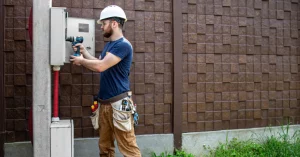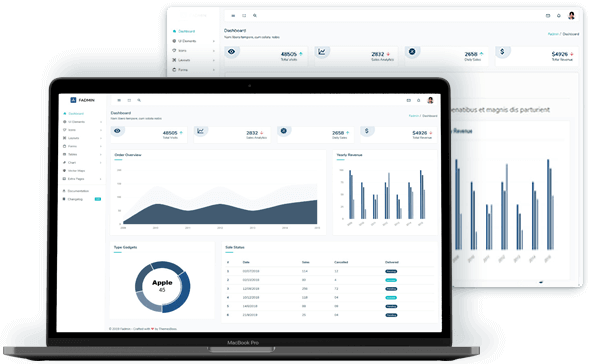Programming solutions play a critical role in enhancing electrical safety guidelines for multi-family properties. By automating inspections and compliance tracking, these technologies address common safety risks effectively. Real-time monitoring systems detect anomalies, facilitating immediate responses to potential hazards. Moreover, fostering accountability among maintenance staff is essential. However, the implementation of such systems raises questions about integration and resident education that warrant further exploration.
Key Takeaways
- Programming solutions automate routine inspections, ensuring timely adherence to electrical safety protocols in multi-family properties.
- Data analytics identify potential risks, helping property managers monitor compliance metrics effectively.
- Real-time reporting simplifies auditing processes, enhancing accountability and transparency among maintenance staff.
- Smart sensors and IoT devices provide continuous monitoring, detecting anomalies and generating alerts for quick intervention.
- Innovative technology fosters a culture of safety and responsibility, promoting proactive communication and resident education on electrical safety.
Understanding the Importance of Multi-Family Property Safety Guidelines
While many property managers recognize the necessity of maintaining electrical systems, the significance of adhering to multi-family property safety guidelines cannot be overstated. These guidelines serve as essential frameworks designed to mitigate risks associated with electrical hazards in shared living environments. By implementing extensive safety protocols, property managers not only guarantee compliance with legal standards but also foster a secure atmosphere for residents. Regular inspections, proper labeling of electrical panels, and adherence to installation codes are critical components of these guidelines. Additionally, educating residents about electrical safety contributes to a culture of vigilance. Consequently, a thorough understanding of multi-family property safety options enhances operational efficiency and promotes community well-being, establishing a foundation for long-term trust between property managers and tenants.
Common Electrical Safety Risks in Multi-Family Properties
Multi-family properties face a variety of electrical safety risks that can jeopardize both resident safety and property integrity. Common hazards include outdated wiring systems, which may not accommodate the electrical demand of modern appliances, leading to overheating and potential fires. Additionally, improper grounding and the presence of faulty circuit breakers can create shock hazards for residents. Overloaded circuits are frequent in shared living spaces, increasing the risk of electrical failures. Moreover, inadequate maintenance can result in undetected issues, compounding safety concerns. Regular inspections and adherence to multi-family property safety guidelines are essential for mitigating these risks, ensuring a safe living environment for all residents while preserving the structural integrity of the property.

How Programming Solutions Address Safety Compliance
Implementing programming solutions greatly enhances compliance with electrical safety guidelines in multi-family properties. By automating routine inspections and maintenance scheduling, property managers can guarantee adherence to safety protocols more efficiently. These solutions utilize data analytics to identify potential risks and track compliance metrics, enabling proactive measures to mitigate hazards. Moreover, programming tools facilitate real-time reporting and documentation, simplifying the auditing process and guaranteeing that all stakeholders are informed. Enhanced communication features within these systems promote accountability among maintenance staff, fostering a culture of safety. Overall, the integration of programming solutions not only streamlines compliance processes but also reinforces the commitment to maintaining a safe living environment, aligning with multi-family property safety guidelines essential for resident well-being.
Implementing Technology to Enhance Safety Monitoring
To enhance safety monitoring in multi-family properties, the integration of advanced technology solutions plays a pivotal role. Implementing real-time monitoring systems, such as smart sensors and IoT devices, allows for continuous oversight of electrical systems. These technologies can detect anomalies, such as overheating or excessive current flow, and generate alerts for immediate intervention, thereby reducing the risk of electrical failures. Moreover, centralized data analytics platforms enable property managers to analyze trends over time, facilitating informed decision-making regarding maintenance and upgrades. By adopting these innovative solutions, multi-family properties can greatly bolster their adherence to multi-family property safety guidelines, ensuring a secure living environment for residents while promoting a culture of safety and responsibility within the community.
Best Practices for Maintaining Electrical Safety in Multi-Family Properties
Effective electrical safety in multi-family properties relies on a set of best practices that guarantee compliance with safety guidelines and minimize risks. Adhering to these practices fosters a secure environment for residents and property managers alike.
- Regular Inspections: Conduct routine evaluations of electrical systems to identify potential hazards, ensuring all components comply with current safety standards.
- Education and Training: Provide ongoing training for maintenance staff on electrical safety protocols and emergency procedures to enhance preparedness.
- Upgrade Infrastructure: Invest in modern electrical systems and devices that meet or exceed multi-family property safety guidelines, reducing the likelihood of failures.
Frequently Asked Questions
What Are the Legal Requirements for Multi-Family Property Electrical Safety?
Legal requirements for multi-family property electrical safety encompass compliance with local codes, regular inspections, and adherence to national standards. These regulations guarantee tenant safety and minimize risks associated with electrical hazards in shared living environments.
How Often Should Electrical Inspections Be Conducted in Multi-Family Properties?
Electrical inspections in multi-family properties should typically be conducted annually to guarantee compliance with safety regulations. Regular assessments help identify potential hazards, maintaining safety standards and enhancing resident confidence in overall property management and safety protocols.
What Training Do Staff Need for Electrical Safety Compliance?
Staff training for electrical safety compliance should encompass understanding electrical systems, recognizing hazards, conducting routine inspections, and emergency response protocols. Regular training updates guarantee adherence to multi-family property safety guidelines and foster a culture of safety awareness.
Can Residents Report Electrical Safety Issues Easily?
Residents can report electrical safety issues through streamlined communication channels established by property management. These systems facilitate prompt reporting, ensuring that concerns are addressed efficiently, ultimately enhancing adherence to multi-family property safety guidelines and residents’ peace of mind.
What Are the Costs Associated With Implementing Safety Programming Solutions?
Implementing safety programming solutions incurs various costs, including initial software acquisition, ongoing maintenance, training personnel, and potential upgrades. These costs, however, are essential for ensuring compliance with multi-family property safety guidelines and enhancing overall resident safety.
Conclusion
To summarize, programming solutions play a pivotal role in enhancing electrical safety guidelines in multi-family properties. By automating inspections, scheduling maintenance, and utilizing data analytics, these technologies mitigate common safety risks and guarantee compliance. Real-time monitoring through smart sensors enables rapid anomaly detection, fostering a proactive safety culture. Ultimately, the integration of these advanced solutions not only reinforces adherence to safety protocols but also cultivates a safer living environment for residents and promotes accountability among maintenance staff.
You May Also Like To Read:




